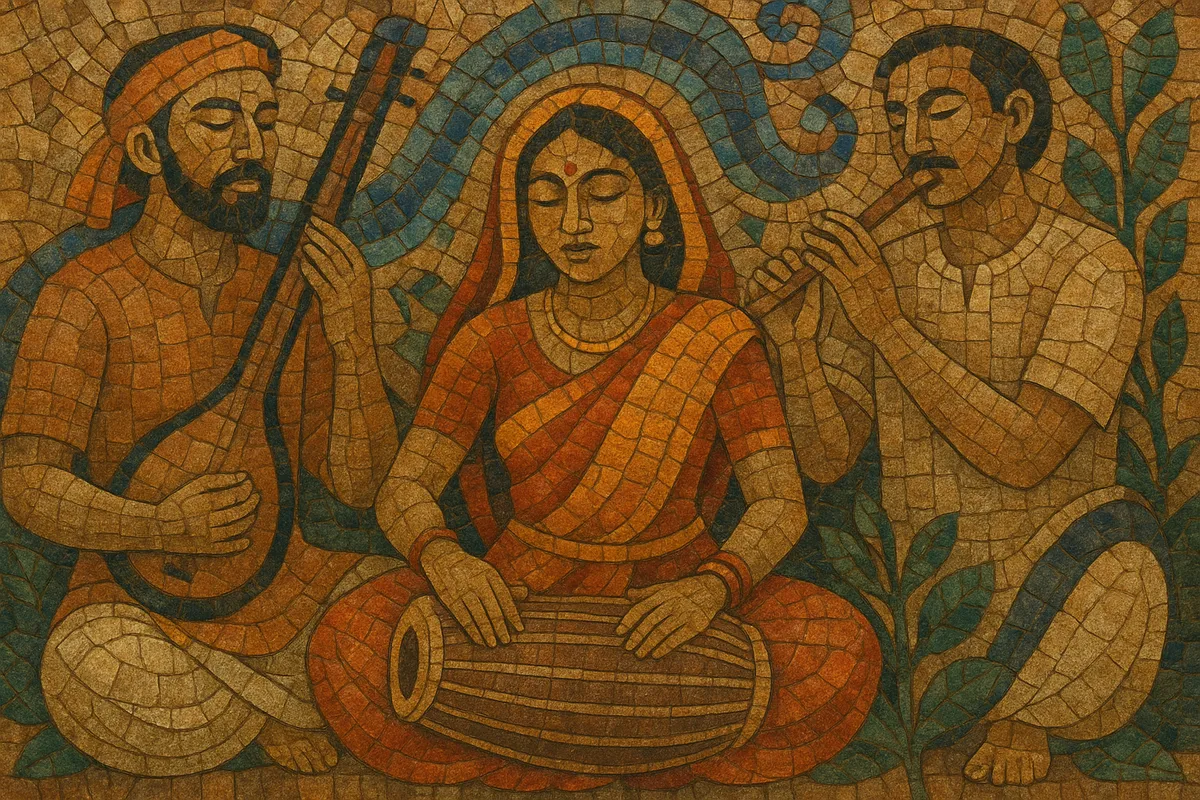
Bengali folk music is the traditional song culture of the Bengal region, today spanning Bangladesh and the Indian state of West Bengal. It encompasses a family of styles that carry the spiritual, pastoral, and riverine life of Bengal into song.
Signature substyles include Baul (mystic minstrel songs), Bhatiali (boatmen’s songs of the rivers), Bhawaiya (pastoral songs from the north), Jari/Sari (processional and work songs), Murshidi/Marfati (Sufi devotional songs), and Gambhira and Kavigan (festive and narrative forms). The music is marked by simple, memorable melodies, strophic forms, and poetic lyrics that blend everyday imagery with devotional and philosophical themes.
Typical instruments include the ektara and dotara (plucked lutes), khamak and khanjani (percussion), dhol/dholak and khol (drums), bansuri (flute), harmonium, and kartal/mandira (cymbals). Vocal delivery favors ornamentation (meend, subtle vibrato), a steady drone, and call-and-response refrains.
Bengali folk music grew alongside the Bhakti movement and Sufi devotional practices that flourished in Bengal from the 16th century. Mystic minstrels (Bauls and fakirs) traveled village to village singing philosophical verses set to simple melodies and drones, while boatmen and farmers shaped work and seasonal songs (Bhatiali, Bhawaiya) to the rhythms of river and field.
By the late Mughal and early colonial eras, distinct substyles crystallized: Baul, Murshidi/Marfati (Sufi), Jari/Sari (processional and work songs), and regional forms like Bhawaiya in Rangpur and Cooch Behar. These songs carried vernacular poetry—often allegorical and spiritual—set in accessible strophic forms and pentatonic or raga-tinged modes.
Scholars, poets, and early recording companies began collecting and publishing folk songs. Pioneers such as Abbasuddin Ahmed and Abdul Alim popularized regional repertoires through gramophone discs and radio (AIR and later Radio Pakistan/Dhaka). The Baul repertoire associated with Fakir Lalon Shah gained iconic status across Bengal.
After 1947 and the 1971 Liberation War, Bengali folk became a cultural pillar in the new nation of Bangladesh and a symbol of regional identity in West Bengal. State institutions (e.g., Bangladesh Shilpakala Academy) and festivals promoted "Lok Sangeet" (folk music), while researchers cataloged variants and lineages.
From cassette culture to world-music stages, Bengali folk moved into urban and global circuits. Artists modernized arrangements (harmonium, guitar, bass) while retaining core melodic and lyrical aesthetics. Bands and soloists revived Baul, Bhawaiya, and Bhatiali, and UNESCO recognized the Baul tradition of Bangladesh as Intangible Cultural Heritage, further cementing the music’s international profile.

